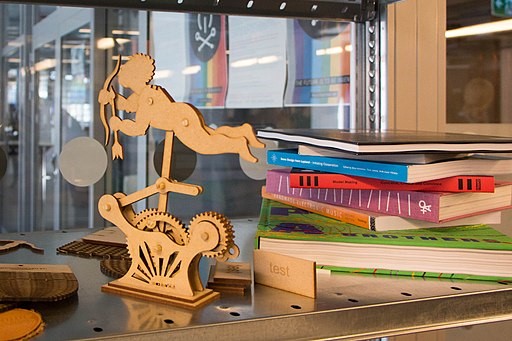Teaching Kids About Laser Cutting Software

Kids love to make things — and when those things are made with machines, the fun factor increases exponentially. Local libraries as well as school districts are building “makerspaces,” places where children can design, build, test and rebuild. Such labs comprise digitally controlled fabrication machinery, including 3D printers, laser cutters and milling machines.
Teaching kids about laser cutting software as part of a shop class or art curriculum is a natural extension of STEM programs. It also provides an opportunity to learn a skill that could lead to future opportunities.
The laser cutting software chosen should be as flexible as possible. For example, Epilog features an open-architecture software design, so these systems work with nearly any Windows vector-based graphic design software. Many manufacturers require users to learn their proprietary design software, which takes time away from the enjoyment of creating. Most Epilog operators use CorelDRAW software, but other popular programs like Adobe Illustrator and AutoCAD can be used as well.
The software operators use is what drives the laser, which can be used in three modes: raster engraving, vector cutting or a combination of both. The way the artwork is set up in the design software will determine how the laser operates.
Raster Engraving
Raster engraving can be best described as high-resolution dot matrix “printing” with a laser. It prints many thousands of dots per inch (dpi). Depending on how dark the area to be etched is, the more dpi will be applied.
Raster engraving is used to create highly detailed graphic images. The laser head scans back and forth, left to right, engraving a series of dots one line at a time. As the laser head moves down line by line, the dot pattern forms the image that was printed from the computer. Scanned images, text, clipart, photographs or line drawings can be raster engraved.
Vector Cutting
In vector cutting, the laser follows a continuous path that traces the outline or profile of an image. Vector goes in a straight line that will etch much like a knife will cut. Vector cutting is normally used to cut completely through materials such as wood, acrylic, paper and others. It can also be used for quick marking of characters and geometric patterns.
Combined mode is used when a user is both engraving and cutting within the same job. The laser itself is very much plug and play. It learning design software that can be more challenging, especially for those without a design background. That’s why it’s so important to understand how the laser sees different images and lines. Once users have those fundamentals down, learning how to design for the laser becomes much easier.
Laser cutters/engravers are exceptionally versatile when it comes to different materials. While many substrates engrave and cut differently, the only non-compatible laser material is polyvinyl chloride. Aside from being extremely messy to work with, PVC releases a corrosive gas that is harmful to the inside of the machine and the laser operator. Other than that, students can use nearly any kind of material (wood, acrylic, fabric, cardstock, etc.) Just make sure to use the recommended settings provided in the manual, and never leave the laser unattended.
A major part of the learning experience for children is prototyping and testing their designs. Encourage experimentation: different types of wood will engrave and cut differently; a slightly thicker sheet of acrylic might need just a hair slower speed or a smidgen higher on the power than a thinner one.
The laser cutter quickly becomes the workhorse of any makerspace or fab lab. A few possible educational projects include:
- Laser-etchedhieroglyphics to learn about ancient civilizations (humanities studies).
- Laser-cut, eco-friendly smart houses; kids design eco-friendly house plans and then laser cut the walls, roof, floor, furniture and fixtures and build prototypes (science and engineering).
- Laser-cut Etch-A-Sketch; students learn about slope by laser cutting gears and building their own Etch-A-Sketch mechanisms (mathematics).
- Laser-cut gliders, where students design and build gliders as part of an aerospace unit (science and engineering).
- Engraving trophies for chess tournaments, making signs for the school garden and other school citizenship projects.
Content sponsored by Epilog Laser: https://www.epiloglaser.com/gs-try-engineering/.
Source: www.epiloglaser.com









 This content was provided by Epilog Laser. In business since 1988, Epilog Laser has worked hard to become the leader in the laser engraving, cutting and marking industry. We are innovators. We are problem solvers. We are committed to designing and manufacturing the highest-quality laser systems, right here in our Golden, CO headquarters.
This content was provided by Epilog Laser. In business since 1988, Epilog Laser has worked hard to become the leader in the laser engraving, cutting and marking industry. We are innovators. We are problem solvers. We are committed to designing and manufacturing the highest-quality laser systems, right here in our Golden, CO headquarters. 








